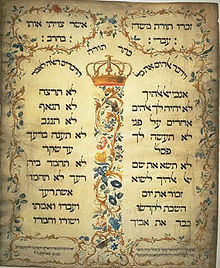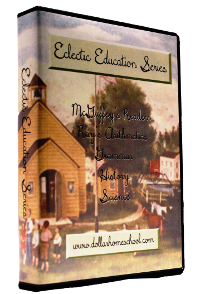 |
| A walk around the pond |
The ones who are just beginning are already showing areas that are their strengths, and others that are their current weaknesses, but I am not concerned. I have learned that, just because I child is struggling in the area of reading or math at the age of six, doesn't mean that he/she will be struggling forever! I am a firm believer that many "learning disabilities" disappear as children mature.
Of course, some of us simply are weak in certain areas, and this can take some acceptance. The idea is to strike a balance between what we should expect and challenge our children to do, and what they are actually capable of doing.
The middle girls are both growing greatly. They are doing well in their McGuffey's, and they are moving steadily forward with their Ray's Arithmetics, both in different places in the Elementary book. The story problems can sometimes be a little difficult, but that is when we get out the chalkboard and make pictures.
 |
| Questions about math |
The older children have a great time with the McGuffey's and Ray's, the daughter of the two really, really loves McGuffey--she would do four lessons a day if we had the time. She not only likes to do the lessons, but she likes to share what she is discovering through them with all of us. She is very quick, and she loves to decorate the pages as she does her work in her copybook. Ray's is her favorite, though, and she would probably do that all day--she is always asking for more time to do it! She also excels in domestic skills, is learning to create a pattern on her own and sew her own clothes, has been doing little stitchery works, and will be baby-sitting her niece once-a-week. She is hoping to learn DSLR photography and put her photos on her blog.
 |
| Long's Language work |
Meanwhile, both are also reading, the Creative is often found with his nose in something from J.R.R. Tolkien (he wrote more than just the ring trilogy and The Hobbit) and the Dear Young Lady is searching for something to follow up after reading all of the popular classics.
Together we have finished a concentrated study of the etymology of the English language, fascinating and one which has enabled the children to have a better grasp of vocabulary, grammar, even spelling, with a greater appreciation as to how our Bible came to us. Of course, we studied all of this because I found it so fascinating, and the children caught my enthusiasm!
 |
| Sarah sewing |
I have also begun to cover all sorts of very practical areas of living in greater detail, such as our current study of microbiology and keeping our homes and our lives healthy. I am planning on covering all sorts of growing-up skills, such as caring for clothing, nutrition and cooking, etc. I am taking these subjects on because I have often assumed that they just "know" because I have learned about these different areas and become skilled in homemaking slowly over many years, and I forget that this is a new group that needs to be taught and led more specifically.
Of course, I am enjoying each subject, even each part of each subject. Whenever I get feeling pressured, my loved ones will suggest that I put our little learning sessions aside for a time. What they don't realize is that I would gladly give up a lot of other things, but our learning times are the best parts of my day! My oldest daughter, who also home-schools her children, feels very much the same!













































